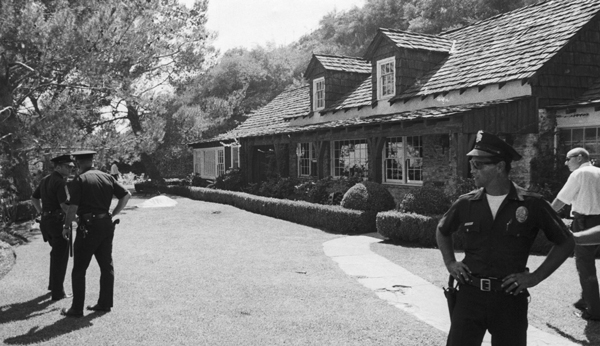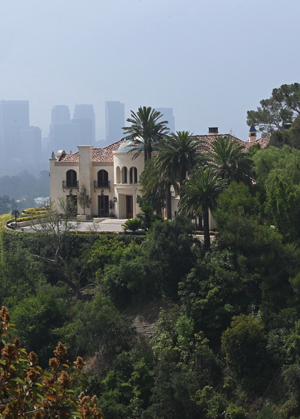Los Angeles might be just as famous for its grisly murders as it is for its movie industry. Tourists can take true-crime tours of the Beverly Hills mansion where the Menendez brothers fatally shot their parents in 1989, the site where the mutilated body of Elizabeth Short (the “Black Dahlia”) was dumped in 1947 or the East L.A. neighborhoods once terrorized by serial killer Richard Ramirez, aka the Night Stalker.
And sometimes real estate is the motive. In August, 72-year-old Marina del Rey resident William Webb was beaten to death, allegedly by his tenants in a plot to prevent him from selling his house, prosecutors say.
Unless they can be turned into museums, properties with macabre histories must eventually go on the market. After all, even a site where a gruesome murder took place is still a piece of Los Angeles real estate. But sellers and brokers of those properties face unique challenges.
“Murder is bad feng shui,” said Orell Anderson, a forensic real estate appraiser who specializes in valuing properties affected by a crime. Residences where murders have occurred usually sell at a discount of 10 to 15 percent, Anderson said. In cases where the homicide was high-profile, the difference can be 20 to 30 percent.
California law requires brokers to disclose whether a death has taken place at a property within the previous three years. Potential buyers can also consult DiedInHouse.com, where for $11.99 you can find out whether someone has died by murder or suicide at a particular address.
Some cases, however, are too infamous to avoid, even if the crime took place decades ago. Take, for example, 2475 Glendower Place, the five-bedroom Spanish Revival house better known as the “Los Feliz Murder Mansion.” There, on the night of Dec. 6, 1959, Dr. Harold Perelson bludgeoned his wife, Lilian, to death with a ball-peen hammer before severely beating his 18-year-old daughter, Judy, while his two younger children slept. She escaped and raised the alarm but not before Perelson drank poison, ending his own life.
A year later, the hillside property sold to an older couple, Emily and Julian Enriquez, but they never lived there. It sat empty for more than 40 years, attracting a cult following of gawkers who peered through the windows at dusty 1950s furniture. Finally, in 2016, the home was purchased for $2.3 million in a probate sale.
 In May of this year it was listed again for $3.5 million, having been stripped down to the studs. Agent Scott Pinkerton of Century 21 Peak, who represented the 2016 buyers and is now the listing agent, said it was hard to escape the home’s dark history.
In May of this year it was listed again for $3.5 million, having been stripped down to the studs. Agent Scott Pinkerton of Century 21 Peak, who represented the 2016 buyers and is now the listing agent, said it was hard to escape the home’s dark history.
“When it first came on the market, the listing agents had a bunch of looky-loos. So many people wanted to come see the house because of what it was,” he said.
This time, Pinkerton is requiring potential buyers to submit proof of funds to get a showing. “I’m in the business of real estate,” he said, “not a tour guide.”
How to de-creepify a home
To offset a property’s notoriety, forensic appraiser Anderson offers sellers some basic advice. First, change the outside appearance of the property so it doesn’t look as it did in media coverage at the time of the crime.
Nicole Brown Simpson’s home at 875 South Bundy Drive in Brentwood became infamous after she and friend Ron Goldman were stabbed to death outside her front door on June 12, 1994. Images of the bloodstained brick path were beamed around the world. The sensational trial and acquittal of former football star O.J. Simpson, Nicole’s ex-husband, guaranteed the property a place in the annals of L.A. history.
The four-bedroom condo, which Nicole had bought for $625,000, sat empty for more than two years after the killings before finally selling for $595,000 in 1997. It sold again in 2006 for $1.7 million. The new owners remodeled the famous front entrance, moving the path entirely.
They also changed the property’s address, another tactic Anderson advises sellers to try.
In 1969, members of the Charles Manson “family” brutally murdered eight-months-pregnant actress Sharon Tate and four others at 10050 Cielo Drive. Rudolph Altobelli, a Hollywood talent manager who owned the French-style villa, struggled for years to sell the property. It finally sold in 1988 for $400,000 below the asking price.

Police at the scene of the Manson Family murders at 10050 Cielo Drive.
The property was bought in 1991 by real estate investor Alvin Weintraub for $2.25 million. He demolished the villa and changed the address to 10066 Cielo Drive in an attempt to remove some of the stigma.
“There’s no house, no dirt, no blade of grass remotely connected to Sharon Tate,” he told the L.A. Times in 1998.
The property was later bought by “Full House” creator Jeff Franklin for an undisclosed sum, and by 2010 he had constructed a mansion with a 15-car garage, two swimming pools, six bars and five aquariums on the site.
But sometimes it’s much more challenging to disassociate a property from a grotesque crime. Sellers have no choice but to demolish the structure in which it took place, Anderson said, but even that may not be enough. “The stigma runs with the land,” he said, “it’s the location and the dirt that people remember.”
One example is the 9,200-square-foot mansion at 18241 Colina Norte in Rancho Santa Fe, San Diego County, where 39 members of the Heaven’s Gate cult committed mass suicide in late March 1997.
Anderson, who appraised the property, said the bodies sat for several days in the spring heat before being discovered.
“You couldn’t get the smell out,” making it impossible to even stand inside the property for long, he said. The mansion eventually sold for $668,000 to a neighbor, who demolished it and changed the address.

The Cielo Drive property, now numbered 10066 Cielo Drive.
Bad blood
If homicides can complicate a sale, sometimes real estate matters precipitate them. One recent case shows just how dangerous a property dispute can be.
In March of this year, William Webb listed his luxury Marina del Rey home for $2.6 million. Five months later, he was brutally slain in what prosecutors allege was a plot by his former stepdaughter and two tenants to prevent him from selling it.
Authorities say Webb was killed in the five-bedroom harborside house at 131 Lighthouse Mall by John Schiefer and Shavonne Webster, who were renting a room there. Webb’s body was burned and dumped in a dry lakebed in Joshua Tree National Park, according to the Los Angeles County district attorney’s office.
Webb’s former stepdaughter, Haena Kealia Worthing, also faces murder charges, although her role in the purported plot is unclear. Since Webb’s divorce from Worthing’s mother in 2012, the Marina property has been at the center of court battles between the two families. Last year Worthing sought to take possession of the property, but a judge denied her request.
“She has some misguided idea that she can get me out of my house,” Webb wrote at the time, according to the L.A. Times. “Haena has stated that she will then inherit the house.”
The property was in contract at the time of the murder. At press time, it was unclear if the sale will close.
If it doesn’t, the broker might want to watch a new streaming video series for inspiration. “Murder House Flip,” a recently announced true-crime home makeover show from “CSI: Crime Scene Investigation” producer Josh Berman, will help owners of “infamous” properties with renovations. The show will air on new short-video platform Quibi, Deadline reported in August.
Sony’s Elyse Seder told Deadline that the new show “combines America’s two biggest TV obsessions: true crime and home renovation.”
